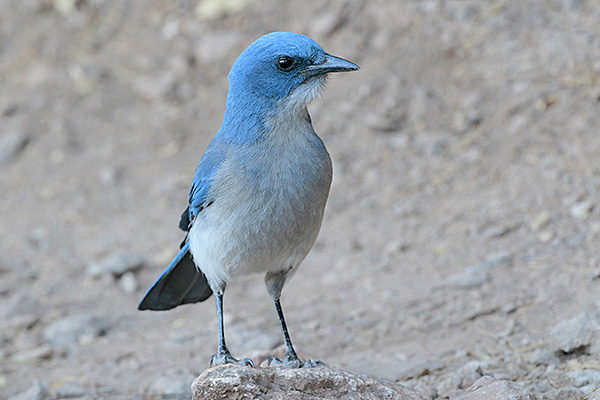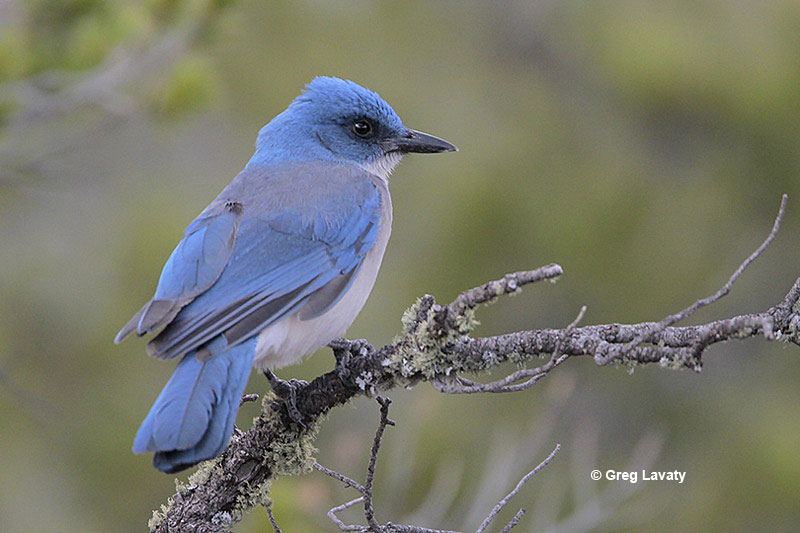With most of its range in its namesake country, the Mexican Jay reaches parts of the southwestern U.S. at the northern edge of its distribution. Highly social, Mexican Jays live in groups of up to two dozen birds. Several females in this group may pair up and nest simultaneously.
Acorns are an important food for Mexican Jays, and it has been noted that the jays are also important to oak trees by dispersing acorns uphill. Due to their social structure, Mexican Jays don’t typically breed until they reach an age of somewhere between three and 14. They have lived up to 20 years in the wild.
On this page
Description of the Mexican Jay
BREEDING MALE
The Mexican Jay has a pale blue head and wings with a grayish back and whitish underparts. Length: 12 in. Wingspan: 20 in.

Photograph © Greg Lavaty.
Female
Same as male.
Seasonal change in appearance
None.
Juvenile
Juveniles have grayish heads.
Habitat
Oak and pine-oak woodlands.
Diet
Acorns, seeds, and insects.
Behavior
Forages on the ground or in trees.
Range
Resident in parts of the southwestern U.S. and Mexico.
Fun Facts
Mexican Jays have very complex social organizations and live in groups of 5-25 birds.
Mexican Jays often mob predators such as hawks or owls.
Vocalizations
A loud “week” call is given.
Attracting
Mexican Jays will come to feeders for seeds.
Similar Species
Pinyon Jay
Pinyon Jays have blue underparts.
Western Scrub-Jays have a white eyebrow.
Nesting
The nest is a cup of twigs placed in a tree.
Number: 4-5.
Color: Pale green, sometimes with darker markings.
Incubation and fledging:
Young hatch at 18 days.
Young fledge (leave the nest) in 25-28 days after hatching but remain with the adults for some time.
Bent Life History of the Mexican Jay
Bent Life History information not currently available.


